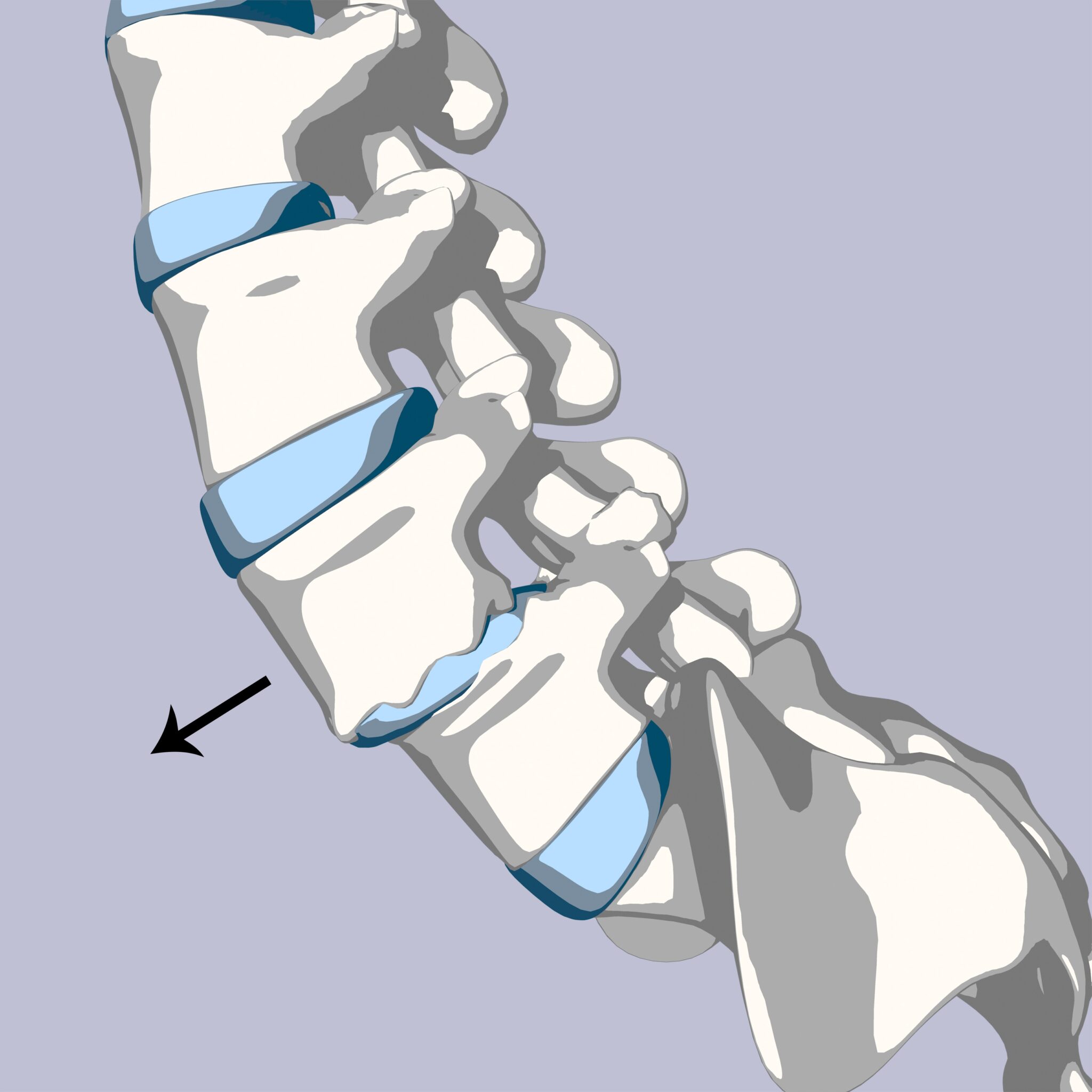Spondylolisthesis, anterolisthesis, and retrolisthesis are related conditions and their terms are often used interchangeably. This can be confusing and sometimes outright wrong. We’ll review the differences between these terms below.
Spondylolisthesis
Spondylolisthesis is a condition characterized by the displacement (slipping) of one vertebra over the one below it. This typically occurs in the lower back, most commonly in the lumbar region. The terms anterolisthesis and retrolisthesis are specific types of spondylolisthesis that differentiate the direction of slippage.
Anterolisthesis
Anterolisthesis refers to the forward movement of a vertebra relative to the one below it.
Retrolisthesis
Retrolisthesis is the opposite of anterolisthesis, involving the backward movement of a vertebra relative to the one below it.
